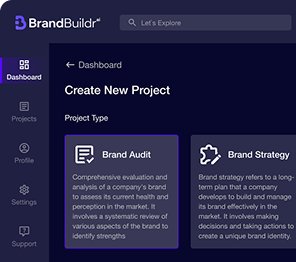SaaS companies strive to improve their products to make them solid and fast-working. They do this using DevOps, a procedure for combining development and operations into a seamless, fast flow of work. This explains why the DevOps market is forecast to rise to $25.5 billion by 2028 from $10.4 billion in 2023.
In this article, we will explain DevOps from the perspective of enhancing SaaS production. We will walk you through DevOps step by step, explain its main ideas, and show you how it can improve the output of SaaS products.

What is DevOps?
The term “DevOps”, short for “Development and Operations”, refers to a collection of practices, cultural philosophies, and tools that promote stronger collaboration and communication between software development and IT operations. DevOps aspires to promote the development and delivery pipeline by spanning the entire software development lifecycle, from planning and coding to testing, deployment, and maintenance.
Software development introduced DevOps to automation tools as a standard, which enabled them to do routine tasks without making mistakes.
Best DevOps practices for SaaS product development include:
- Continuous integration (CI). Frequently merging code changes into a shared repo with automated testing.
- Continuous delivery (CD). Automatically deploying code that passes tests to production or staging environments.
- Automated testing. Using tools to run tests automatically for higher quality and less manual work.
- Continuous deployment. Fully automated release process, moving code to production after passing tests.
- Monitoring and logging. Continuously monitoring applications and infrastructure to detect issues early.
- Version control. Tracking code changes and enabling collaboration using version control systems.
When Do SaaS Projects Need DevOps?
The need for DevOps specialists emerges from the very start of a project, as they play a crucial role in shaping the development, testing, and deployment environments. Their expertise lies in architecting efficient server setups and advising on performance optimization. Some key scenarios where DevOps specialists can add value include:
- Kick-off. During the initial planning phase, they can help define the technology stack and architecture, considering future functionality requirements.
- Environment setup. DevOps specialists can configure separate environments for testing and production, ensuring proper isolation and resource allocation.
- Existing project assessment. For ongoing projects, DevOps specialists can evaluate the current system, documentation, technologies used, databases, networks, and server configurations, identifying areas for improvement or correction.
- Infrastructure and security enhancements. Specialists analyze the current infrastructure and existing security measures and perform relevant tests and assessments to ensure that the system is more resilient and capable of protecting the data.
- Infrastructure as code (IaC) implementation. DevOps professionals can implement best practices in IaC, automatize the infrastructure deployment and creation, and fasten the development, simplifying the life of SaaS business owners.
- Server optimization. Their expertise can guide decisions on server class upgrades, evaluating performance benchmarks, costs, and associated risks.
- Monitoring and logging. One of the fundamental practices for any DevOps is constant monitoring and log management. They help identify issues as soon as possible and address them. So the system runs smoothly and effectively.
In summary, DevOps specialists contribute various skills to implement agility, scalability, and reliability during the software delivery lifecycle.
Benefits of DevOps for SaaS Product Development
Implementing DevOps practices leads to prominent benefits for SaaS product development. Let’s see some main ones in each field:
Technical Benefits
- Quicker issue identification and resolution. DevOps practices promote continuous monitoring. This way, teams can identify and resolve issues promptly with fewer disruptions and downtime.
- Faster error correction. Automated testing, continuous integration, and robust monitoring mechanisms help to detect and correct errors swiftly, reducing the impact on end-users.
- Streamlined processes for efficient project management. DevOps methodologies emphasize automation, standardization, and process optimization, leading to increased efficiency and productivity.
Social Benefits
- Motivated, productive, and satisfied teams. DevOps implies shared ownership, transparency, agile workflows, and constant learning. From that perspective, such a model seems more satisfying and grants higher morale to the team.
- Proper personnel allocation for specific roles. DevOps breaks down silos and facilitates cross-functional collaboration. This way, each team member can concentrate on the aspects of the work in which they have the most expertise or responsibility.
- Enhanced opportunities for professional growth and knowledge sharing. DevOps encourages continuous learning, knowledge sharing, and skill development, providing team members with opportunities for professional growth.
Business Benefits
- Accelerated product releases. DevOps practices facilitate faster release cycles, allowing SaaS companies to quickly adapt to market demands and customer needs.
- Resilient and stable operational environment. By emphasizing automation, monitoring, and continuous improvement, DevOps helps create a stable and resilient operational environment, reducing downtime and improving reliability.
- Improved cross-departmental communication and collaboration. DevOps breaks down silos, fostering better communication and collaboration across teams, leading to more aligned and efficient workflows.

DevOps as a Service Implementation Roadmap
Now, that you know the basics, let’s move on to the six core steps of the DevOps implementation process.
Step #1. Current Situation Analysis
First, you must identify the bottlenecks, inefficiencies, and points in the current processes that require improvement or DevOps integration. Ensure that the IT objectives align with the business’s goals and that the DevOps approach is business-centric. Next, specify these tasks clearly in terms laid out so that everyone can understand the practices.
Step #2. DevOps Strategy Formulation
Based on the analysis and goals, create a comprehensive DevOps implementation strategy. Consider improving integration between development and operations teams, delivery speed, reliability, scalability, and security, and aligning with industry best practices. When creating the strategy, include monitoring concepts and policies, assigning roles and responsibilities within the DevOps team, and defining processes for collaboration and communication.
Step #3. Utilization of Containerization
Containerization bundles the necessary software and its dependencies in an isolated, unpacked container. As such, deploying flexible and reliable software is faster and more consistent. Containerization allows developers to isolate their applications and dependencies from the underlying infrastructure.
Step #4. Implementation of CI/CD
One key stage is integrating a continuous integration and continuous delivery pipeline. The CI/CD pipeline must be developed step by step: software compilation, automated testing, production deployment, and efficiency tracking.
Step #5. Test Automation and QA-Dev Alignment
While automated testing is crucial for accelerating delivery processes, not all tests need to be automated. You can still perform functional testing manually. To ensure high product quality, foster close collaboration and alignment between the QA and Development teams. This helps catch and resolve errors early in the development cycle before propagating to production.
Step #6. Performance Tracking and Troubleshooting
Efficiency monitoring ensures transparency of the DevOps roadmap and methodology, and KPIs must be defined to track and estimate progress. Some elementary but critical indicators are speed, quality, resources, failure statistics, and feedback. Thus, it is possible to establish the causes of errors and bugs within development and monitoring.
Common Challenges in Implementing DevOps Development Services
Implementing may seem quite tricky. Let’s examine the most common challenges and learn how to avoid them.
- Unclear goals and inadequate planning. A clear vision of what needs automation and why is a must. Without this, teams might automate the wrong processes, wasting time and effort. You should clearly define the goals and scope of automation before starting the implementation process.
- Lack of cross-team collaboration and communication. DevOps automation requires different teams to work together closely. Poor communication can lead to duplication of work, misalignment, and ineffective automation. Establish open channels for communication and encourage cross-team collaboration from the start. The solution is to foster strong cooperation by involving all stakeholders, setting up regular meetings, and encouraging open communication.
- Overlooking security and compliance requirements. In the rush to automate, teams sometimes forget about security measures, which can expose sensitive data and systems to vulnerabilities. Therefore, you should include security and compliance requirements in your automation strategy, such as implementing secure coding practices, access controls, and regular audits.
- Insufficient testing and quality assurance practices. Automation shouldn't come at the cost of quality. To validate your processes, use unit testing, then set up a CI/CD pipeline. This helps ensure that the code is deployed stably and reliably. To implement third-party integrations, use unit testing, integration testing, and end-to-end testing as part of CI/CD.
- Ineffective change management strategies. DevOps automation involves frequent code, infrastructure, and config changes. Otherwise, these changes will bring chaos, downtime, and even security breaches. To prevent this change management must implement several robust practices. They are version control, release management, and rollback methods, for controlled, smooth change implementations.
- Neglecting monitoring and alerting mechanisms. Automation requires continuous monitoring and alerting to ensure system health and performance. Teams should implement real-time monitoring, log management, and alert notifications. You should set up comprehensive monitoring and alerting solutions, including real-time monitoring, log management, and automated alert notifications.
- Poor documentation and knowledge-sharing practices. Automation processes should be well-documented for knowledge transfer and maintainability. To this end, you must establish a culture of documentation and knowledge sharing, with clear guidelines and tools for documenting automation processes, configurations, and troubleshooting steps.
DevOps is a success driver for SaaS companies to improve their product development practices, making workflows smoother, fostering partnership, and accelerating time to market.

Conclusion
DevOps is a success driver for SaaS companies to improve their product development practices. On both sides of the process, it makes workflows smoother, fosters partnership, and gets to the market faster.
Yet, successful DevOps implementation is impossible without particular challenges. To avoid the potential issues, you must set clear goals, make a robust plan, ensure continuous communication, and focus on quality assurance and security. With a well-defined roadmap and proactive approach to addressing challenges, SaaS companies can leverage DevOps to stay ahead in today's dynamic market landscape.
Ready to revolutionize your SaaS product development? Start your journey towards faster releases, more resilient systems, and happier customers with the Codebridge DevOps consulting services.
Heading 1
Heading 2
Heading 3
Heading 4
Heading 5
Heading 6
Lorem ipsum dolor sit amet, consectetur adipiscing elit, sed do eiusmod tempor incididunt ut labore et dolore magna aliqua. Ut enim ad minim veniam, quis nostrud exercitation ullamco laboris nisi ut aliquip ex ea commodo consequat. Duis aute irure dolor in reprehenderit in voluptate velit esse cillum dolore eu fugiat nulla pariatur.
Block quote
Ordered list
- Item 1
- Item 2
- Item 3
Unordered list
- Item A
- Item B
- Item C
Bold text
Emphasis
Superscript
Subscript





















.avif)



.avif)

.avif)


